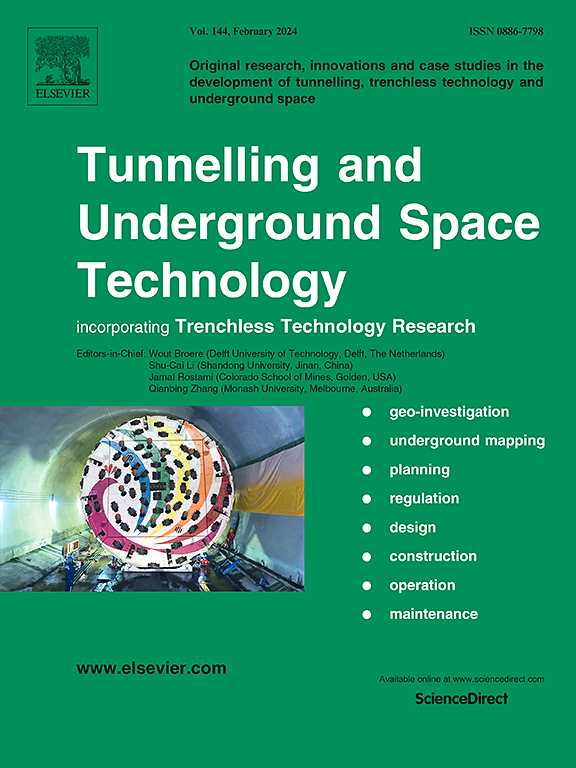Disaster characteristics and mechanisms of the time-delayed rockburst development process in tunnels at 2500 m depth
IF 6.7
1区 工程技术
Q1 CONSTRUCTION & BUILDING TECHNOLOGY
引用次数: 0
Abstract
Based on the headrace tunnels of Jinping II hydropower station with a buried depth of up to 2500 m, a database containing 74 cases of time-delayed rockbursts with various intensities was established through investigations and monitoring of a cumulative tunnel section of 30 km. According to the evolution characteristics of microseismic events during the development process of rockburst, the time-delayed rockburst was first classified into two types, including rockburst with and without a “sleep period”. The spatiotemporal distribution and development characteristics of rockburst were statistically analyzed, and the mechanism of rock fracture in the development process of rockburst was revealed. The results indicate that geological structures, structural planes, rock mass integrity and support measures all have an impact on the spatial distribution and intensity of time-delayed rockburst. There are differences in the delay time, delay distance and microseismic evolution characteristics between the two types of rockbursts. During the development process of time-delayed rockburst, the type of rock fractures is primarily tensile, with occasional shear and mix type, and their proportions are influenced by the presence of rigid structural planes. Furthermore, some time-delayed rockbursts are often accompanied by at least one immediate rockburst occurrence at the same location or adjacent area, indicating that time-delayed rockbursts tend to occur in regions where energy accumulation is relatively concentrated. This study can provide important guidance value for the mechanism interpretation and early warning of time-delayed rockburst.
求助全文
约1分钟内获得全文
求助全文
来源期刊

Tunnelling and Underground Space Technology
工程技术-工程:土木
CiteScore
11.90
自引率
18.80%
发文量
454
审稿时长
10.8 months
期刊介绍:
Tunnelling and Underground Space Technology is an international journal which publishes authoritative articles encompassing the development of innovative uses of underground space and the results of high quality research into improved, more cost-effective techniques for the planning, geo-investigation, design, construction, operation and maintenance of underground and earth-sheltered structures. The journal provides an effective vehicle for the improved worldwide exchange of information on developments in underground technology - and the experience gained from its use - and is strongly committed to publishing papers on the interdisciplinary aspects of creating, planning, and regulating underground space.
 求助内容:
求助内容: 应助结果提醒方式:
应助结果提醒方式:


